Should I Buy a Used Cadillac CTS-V?

Cadillac threw one of its first serious punches at German luxury roughly a decade ago when it began offering the CTS-V: a Corvette-powered sedan that, in theory, competed directly with the BMW M5.
The first CTS-V made do with relatively conservative styling changes including “V” badges and dual mesh grilles in its front fascia. But what really matters is under the hood. For the first two years it sold, Cadillac used the same 5.7-liter V8 as the C5 Corvette Z06.
In 2006 they switched to the 6.0-liter LS2, but one thing remained the same: a Tremec TR56 six-speed manual transmission was the one and only way to transfer power from the engine to the rear wheels. Unfortunately, the Corvette-powered Caddy had its share of problems.
Trim Packages:
A sub-par interior slots snugly onto the list of CTS-V downsides. For a car that aspired to stand beside models from BMW’s M division and Mercedes-AMG, there wasn’t enough about the V-Series CTS to make it memorable. A bland center stack and relatively unsupportive seats seem half-baked beside the uber sedans cranking out of Germany at the time.
There weren’t really trim packages associated with the CTS-V because it sort of stood as its own trim level within the CTS line. Specific interior touches include a three-spoke steering wheel, suede seat inserts and satin chrome bezels in the instrument cluster.
Top 3 Reasons to Buy:
- Raw power: With 400 hp and 395 lb-ft of torque, there’s one thing you can’t dispute about the CTS-V: it’s stinking fast in a straight line. Optional suspension upgrades gave it more respectable handling, but you’re never going to want for grunt with this thing.
- Value: the original MSRP for a CTS-V was a bargain beside cars like the M5 and the same holds true assuming all other factors are the same.
- Scarcity: At least to some people, there’s something intriguing about driving a Cadillac with Corvette power that you won’t get from driving an M5 or an E55 AMG from the same era.
Top 3 Problem Areas:
- The first-generation CTS-V is notorious for having a failing differential. This was especially true of the first two model years that came with the 5.7-liter V8. General Motors upgraded the rear end for the 2006 model year, but it wasn’t until the second generation in the 2008 model year that the company really beefed up the rear end.
- Aside from overpowering the diff, CTS-Vs struggle with rear wheel hop, which is a major contributing factor to why they seemed to destroy their rear ends.
- Some owners complain about poorly-finished interior components. For example, the dials on the center stack have a tendency to chip easily, leaving them to look prematurely worn down.
Before you buy:
It’s important to know that Cadillac issues a standing offer to first-generation CTS-V owners to upgrade the rear end in their car to the new 2008 and later differential, but the company isn’t willing to cover that cost. Aftermarket solutions to the weak rear end exist, but it’s a very expensive modification to make.
Avoid high mileage models with multiple owners because – trust us – the temptation to try “hard launches” is huge. That’s especially true for the 2004 and 2005 model years where the rear ends are particularly prone to falling apart, but it’s worth applying to any first-generation car.
Whining noises from the rear end are common in these car and it doesn’t necessarily mean the car has been abused. Nevertheless, it’s important to listen for strange noises before buying and to have a third party mechanic inspect the rear end for loose bushings and damage.
Best Bang For Your Buck:
If you’re serious about buying a first-gen CTS-V, avoid the first two model years. By now, the chance of having to hassle with the rear end is probably bigger than the performance payoff. Instead, look for a 2006 or 2007 model with low mileage or a model that had the second-generation differential swap performed with paperwork to document the upgrade.
Recall and Crash Database
Note: the CTS-V was not specially rated by the IIHS or NHTSA. These ratings reflrect the CTS. There have been no recall campaigns affecting the first-generation CTS-V.
2004 Cadillac CTS NHTSA crash test results
2004 Cadillac CRS IIHS crash test results
2005 Cadillac CTS NHTSA crash test results
2005 Cadillac CTS IIHS crash test results
2006 Cadillac CTS NHTSA crash test results
2006 Cadillac CTS IIHS crash test results
GALLERY: 2005 Cadillac CTS-V
Discuss this story at our Cadillac forum

Luke is an energetic automotive journalist who spends his time covering industry news and crawling the internet for the latest breaking story. When he isn't in the office, Luke can be found obsessively browsing used car listings, drinking scotch at his favorite bar and dreaming of what to drive next, though the list grows a lot faster than his bank account. He's always on <A title="@lukevandezande on Twitter" href="http://twitter.com/lukevandezande">Twitter</A> looking for a good car conversation. Find Luke on <A title="@lukevandezande on Twitter" href="http://twitter.com/lukevandezande">Twitter</A> and <A title="Luke on Google+" href="http://plus.google.com/112531385961538774338?rel=author">Google+</A>.
More by Luke Vandezande



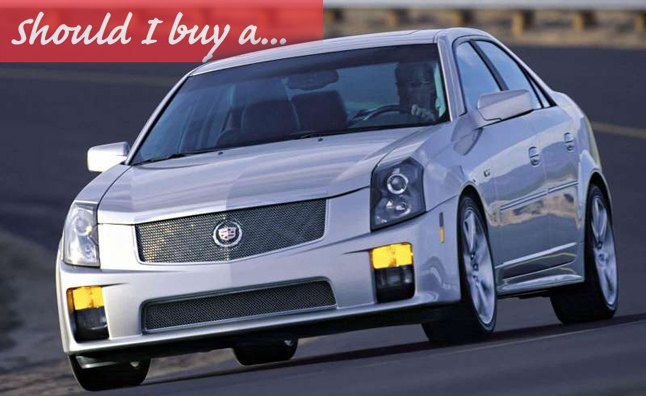















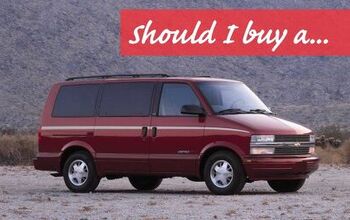

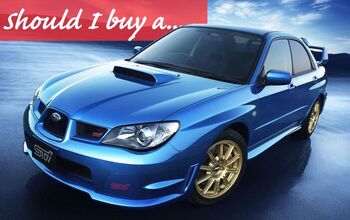





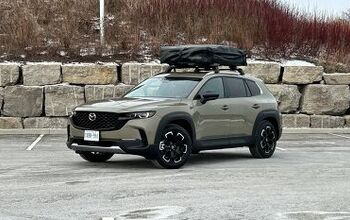
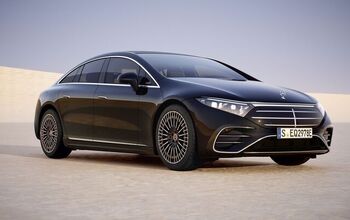

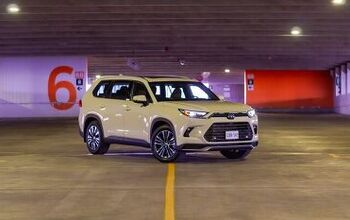



Comments
Join the conversation
Luke - all you had to do was ask and I would have let you drive mine for your article! Just a few small notes - I posted on Facebook, but I know you aren't on there all that often. The seats are actually really supportive - I track the car all the time, and don't slide around at all thanks to the suede inserts. Another small note - there's no 2008 CTS-V, The second generation started in 2009. You can't upgrade to a '2008 or newer' diff as you suggest, because none exist - and the second-generation CTS-V differential design doesn't fit under the first-gen cars. It's a different platform. There were four different iterations of the rear-end that were offered by GM to fix the exploding diff problem, and most cars have had theirs replaced under warranty with the latest one by now - mine has a fourth-generation version of the diff despite being a first-year car. I would personally suggest buying a 2004 or 2005 over a 2006 or 2007. The LS6 has a different character than the LS2, and if any version of the car is going to be collectible, then it's going to be the first-year car. I also suggest avoiding low-mileage cars because they are less likely to have had any upgrades performed on them via warranty work, especially with the differential.
Real good article wraps it up pretty well. I think Ben is being a little nit picky on your points, which you were pretty good on regarding the diff. There were 4 generations of the diff, with Gen 3 going into the 06/07 cars and Gen 4 being a reinforced version of that which was released in 2008, and that is what one would get if they ordered one today. The torque of the LS2 is great and they fixed a lot of small details compared to the LS6 cars. All good but I prefer my '06 LS2! Been rock solid through 112k miles just a battery and a pulley replaced. Original diff is quiet and going strong.